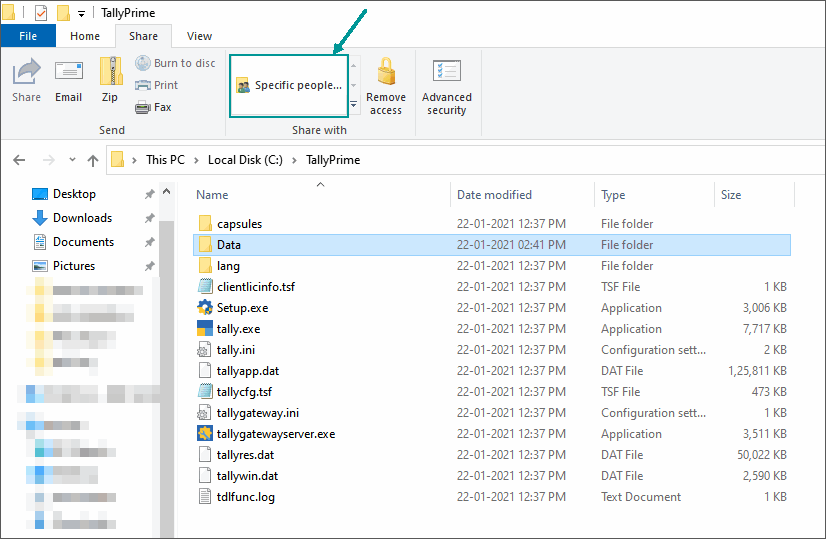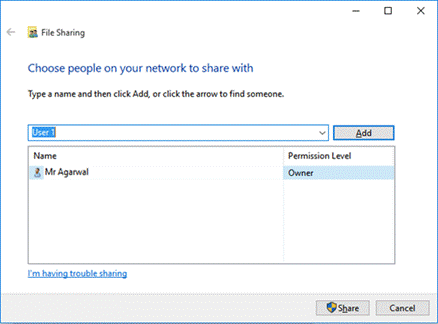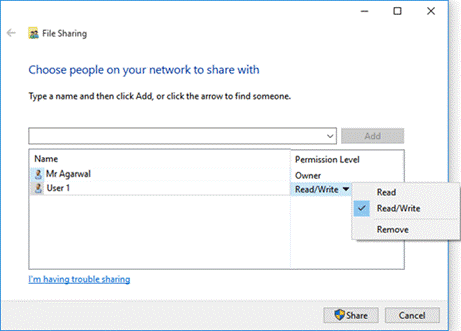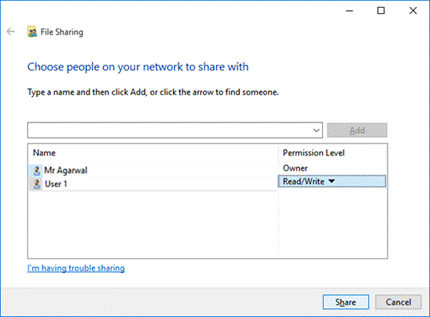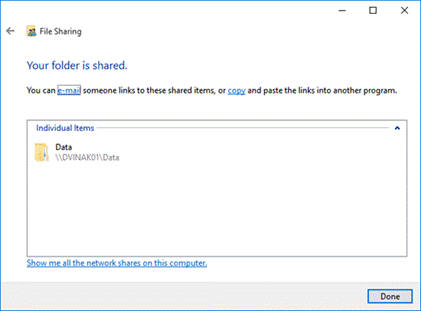Data Sharing in Windows – FAQ
Some of the commonly asked questions about data sharing in windows are answered here.
You can share folders in Windows 7 Operating Systems.
Sharing Data
- Select the required folder. For example, the Data folder available in the default application folder (C:\Program Files\TallyPrime).
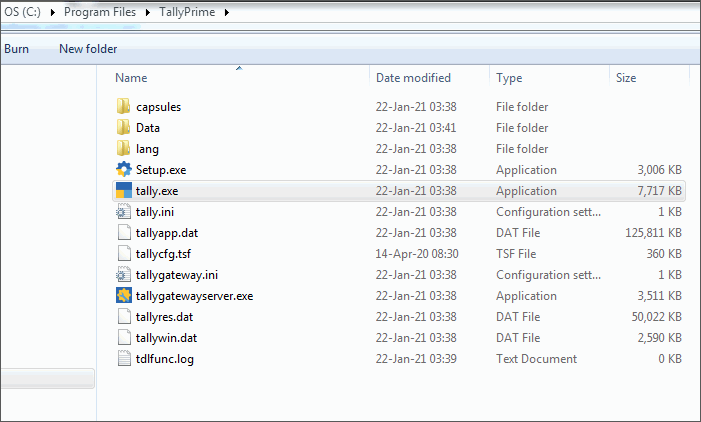
- Right-click and select Properties.
- The Data Properties window opens.
- Click Sharing tab.
- Click Advanced Sharing.

- The Advanced Sharing window opens and check the option Share this folder.
- Click Permissions.

- Permission for Data window opens.
- Select the group or user name from the Group or user names list under Share Permissions.
- Set the required permission for the selected Group or user names by checking Allow or Deny various accesses displayed:

- Click OK.
- The Advanced Sharing window appears.
- Click OK to share the selected folder.
- In the Data Properties window click Close.
- On clicking the data folder in explorer window the detailed information related to the folder appears.
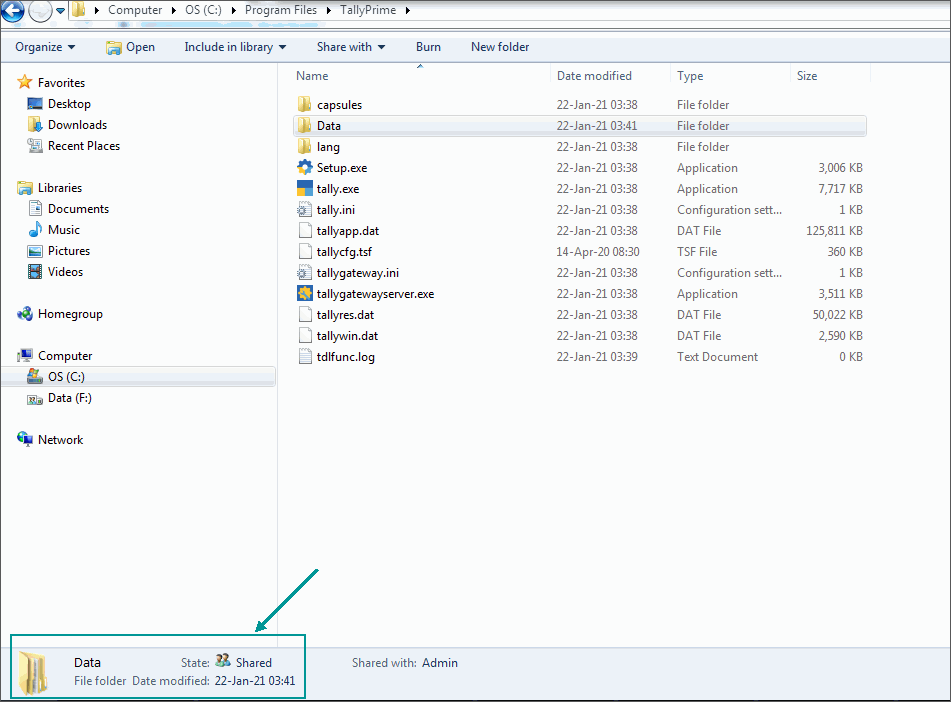
Note: Click Add to include groups or users to the list of Groups or user names.
Security Settings
In order to secure a computer and its resources, you must consider the rights that users will have. You can secure a computer or multiple computers by granting users or groups with specific permissions. You can help secure a file or folder, by assigning permissions to allow users or groups to perform specific actions.
- Right-click the folder, and select Properties.
- The Data Properties window opens.
- Click Security tab.
- Select the required Group/User Name from the list of Group or user names and click OK.
- In case, you want to change permissions for the selected Group/User Name, click Edit.

- Click Add.
- Click Check Names to confirm the availability of the object name.

- Click OK.
- Permissions for Data window appears listing the newly added object.
- Set the Permissions.
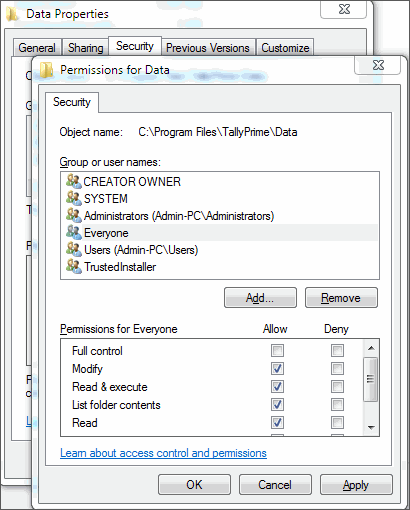
- Click Apply.
- Click OK to set the Security for a selected folder.
You can share TallyPrime data folder in Windows 8.
- Navigate to the data folder and double-click it.
- Click the Share tab, and click Specific People.

- In the file sharing window that opens, enter the name of the user and click Add.
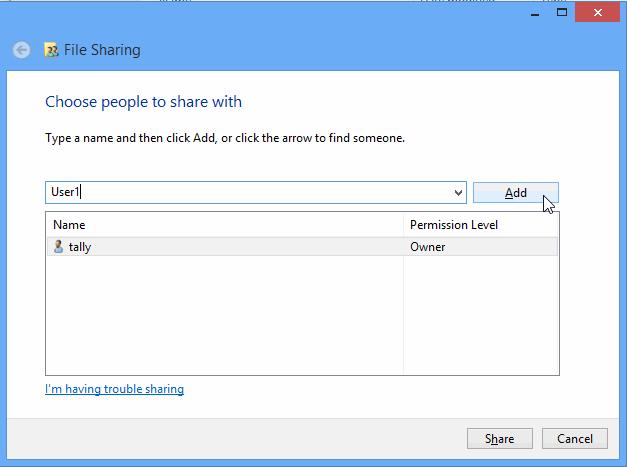
- Select the level of access, usually for Tally, the data folder has to be given Read/Write access.

- Click Share.
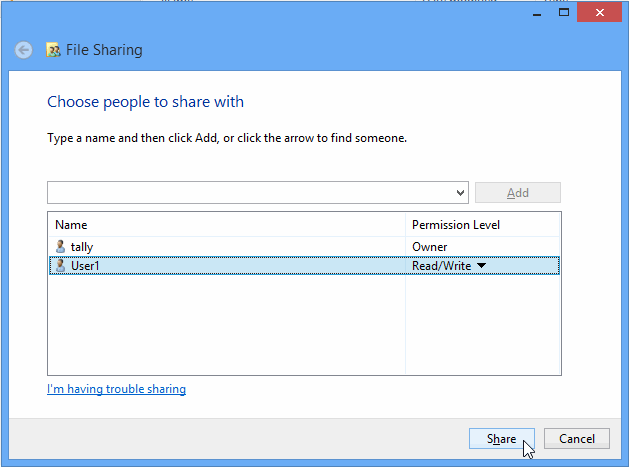
- Click Done.
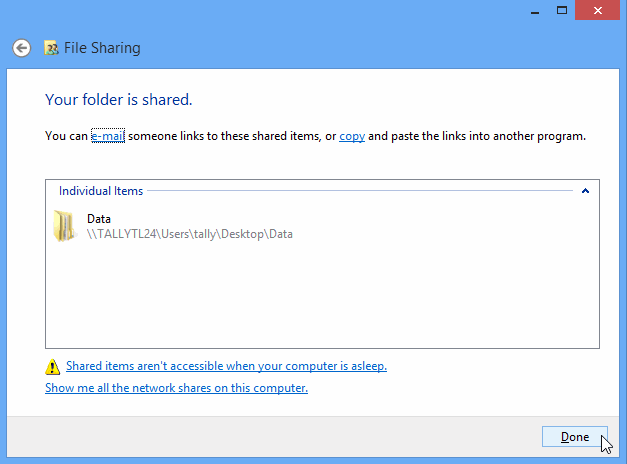
- Click Done.
On a Windows 10 computer, you can share your company data with multiple users by following this simple procedure.
To share data in Windows 10
You can extract ledger balances through ODBC in TallyPrime by extracting the Ledger data in MS Excel using ODBC and searching for the column with the header as $_ClosingBalance. To learn how to extract data to MS Excel using ODBC refer to Extract Data to MS Excel Using ODBC in TallyPrime.
TallyPrime currently does not support extracting ledger transactions through ODBC in TallyPrime. To learn how to extract other data, refer to Extract Data Using ODBC in TallyPrime
To know which ODBC table has what data, you will have to refer to the extracted data set manually. To learn how to extract data to MS Excel, refer to Extract Data to MS Excel Using ODBC in TallyPrime.
You cannot extract Trial Balances through ODBC in TallyPrime. However, you can extract ledger balances and create your own Trial Balance as required in Excel. To learn how to extract data to MS Excel refer to Extract Data to MS Excel Using ODBC in TallyPrime.

